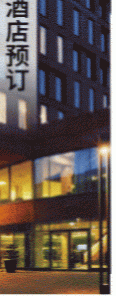|
  
- 积分
- 22836
- 威望
- 3456
- 金钱
- 11
- 阅读权限
- 100
- 性别
- 男
- 在线时间
- 2752 小时
|
4#
 发表于 2006-4-25 12:38
发表于 2006-4-25 12:38
| 只看该作者

Kokunimasa offered a harsh “Illustration of the Decapitation of Violent Chinese Soldiers” that included a lengthy inscription. The benevolence and justice of the Japanese army, this text explained, equaled and even surpassed that of the civilized Western nations. By contrast, the barbarity of the Chinese was such that some prisoners attacked their guards. As a warning, the Japanese—as depicted in the print—had beheaded as many as thirty-eight rebellious prisoners in front of other captured Chinese. The Rising Sun military flag still fluttered in one panel of Kokunimasa’s print; the stalwart cavalry officer still surveyed the scene; the executioner still struck the familiar heroic pose with upraised sword. The subject itself, however, and severed heads on the ground, made this an unusually frightful scene.

The derision of the Chinese that permeates these prints found expression in other sectors of popular Japanese culture. The scholar Donald Keene, for example, has documented how popular prose, poems, and songs of the war years took similar delight in lampooning the “pumpkin-headed” Chinese and making jokes about their slaughter. (It was around this time that the pejorative Japanese epithets chanchan and chankoro became popular, amounting to a counterpart to the English-language slur “Chink.”)
Even today, over a century later, this contempt remains shocking. Simply as racial stereotyping alone, it was as disdainful of the Chinese as anything that can be found in anti-“Oriental” racism in the United States and Europe at the time—as if the process of “Westernization” had entailed, for Japanese, adopting the white man’s imagery while excluding themselves from it. This poisonous seed, already planted in violence in 1894-95, would burst into full atrocious flower four decades later, when the emperor’s soldiers and sailors once again launched war against China. Ironically, the Japanese propaganda that accompanied that later war involved throwing off “the West” and embracing “Pan-Asianism”—but that is another story.
Because racism in the age of imperialism is most commonly associated with “white supremacism” (and the smug rhetoric of a “white man’s burden”), this explosive outburst of Japanese condescension toward China and the Chinese seems all the more stunning. In the Western hierarchy of race, so-called Orientals or Asiatics or Mongoloids were lumped together—below the superior Caucasians and above the “Negroid.” In their inimitable way, the Japanese promoted these stereotypes where the Chinese were concerned, even while trying to demonstrate their own identity with the Caucasians.
What made this even more disconcerting was the intimate overlay of race and culture in the case of Japan and China. No non-Chinese society was more indebted to China. Japan’s written language, its great traditions of Buddhism and Confucianism, vast portions of its finest achievements in art and architecture—all came from China. In an abrupt phrase familiar to all literate Japanese, even in the Meiji period, China and Japan were culturally as close as “lips and teeth.”
But that, of course, was the point—and what made this outburst of anti-Chinese sentiment a very peculiar sort of racism on the part of the Japanese. The Chinese were contemptible because they were deemed inept. At the same time, however, “China” was symbolic and self-referential. “China,” that is, stood for “Asia.’ It stood for “the past.” It stood for outmoded “traditional values.” It stood for “weakness” vis-à-vis the Western powers. It stood, coming even closer to home, for “evil customs of the past” that Japanese leaders ever since the Restoration argued had to be eradicated within Japan itself if their nation—and Asia as a whole—were to survive in a dog-eat-dog modern world.
“Old” China was the Anti-West, the Anti-Modern (a notion China’s own Communist leaders would later embrace with a vengeance themselves). As a consequence, while the corpses were unmistakably and brutally Chinese, they stood for a great deal more as well.
To return to Fukuzawa’s famous phrase, killing Chinese amounted to “throwing off Asia” in every conceivable way. This was seen to be essential to Japan’s security, its very survival. It was deemed progressive. It amounted, when all was said and done, to embracing a “modern” kind of hybridization. Where the old Japan had been distinguished by enormous indebtedness to traditional Chinese culture, the new Japan would be distinguished by wholesale borrowing from the modern West.
At the same time, of course—as is true of nationalism everywhere—it was necessary to think oneself unique. In the Japanese case, this was accomplished by “reinventing” the mystique surrounding the throne and imperial family. It was not coincidental that the war against China coincided with the consolidation of a modern emperor system under the new constitution of 1890.
From the Japanese perspective, the denigration of the Chinese that permeates the Sino-Japanese War prints was really secondary to the obverse side of this triumphal new nationalism. It was secondary, that is, to the story of the surpassing discipline and self-sacrifice of Japanese from every level of society. That is why many of the most memorable war prints do not depict the enemy at all, but rather focus on the Japanese alone. Sometimes they are simply battling raw nature (the fierce blizzards and turbulent seas), sometimes simply shown in control of the powerful machinery of modern warfare. Always there is a celebration of brave men engaged in a noble mission—throwing themselves against an ominous, threatening, but also thrillingly challenging and alluring world.
Thus Gekkō, who often reveled in particularly grisly combat details, devoted one print to a serene depiction of “Officers and Men Worshipping the Rising Sun While Encamped in the Mountains of Port Arthur.” (That the sun rose in the east, the direction of the Imperial Palace in Tokyo, intensified the ideological implications of such worship.) Another Gekkō offering focuses on the solitary figure of “Engineer Superior Private Onoguchi Tokuji, Defying Death,” and yet another on “the Famous Death-Defying Seven from the Warship 'Yaeyama'” rowing through high waves.

“Picture of the Second Army’s Assault on Jinzhoucheng: Engineer Superior Private Onoguchi Tokuji,
Defying Death, Places Explosives and Blasts the Gate of the Enemy Fort” by Ogata Gekkō, 1895
[2000_407] Sharf Collection, Museum of Fine Arts, Boston

“Illustration of the Death-Defying Squad of Captain Osawa and Seven Others from the Crew
of the Warship 'Yaeyama' Pushing Forward in Rongcheng Bay” by Ogata Gekkō, 1895
[2000_408] Sharf Collection, Museum of Fine Arts, Boston
Nobukazu’s most famous war print is probably his heroic close-up rendering of “General Nozu” leading his horse and three men across a deep river in the moonlight. Toshihide paid tribute to “Sergeant Miyake” and a sturdy subordinate, who stripped to the waist and braved the frigid waters of the Yalu River to carry out their mission. An indidentified artist went Toshihide one better by depicting a certain “Sergeant Kawasaki” swimming across a turbulent rain-swollen river with a sword clenched between his teeth.

“Sergeant Miyake’s Courage at the Yalu River” by Watanabe Nobukazu, 1895
[2000_380_30] Sharf Collection, Museum of Fine Arts, Boston

Toshikata (the maestro of the predictable pose with whom this discussion began) also captured this spirit of valor transcending any specific battle or foe without necessarily explicitly flourishing a sword or unfurling a Rising Sun flag. One of his most effective war prints, for example, simply depicts sailors poised almost like a group statue as they man one of their warship’s big guns. Another of his well-known scenes portrays naval officers seated on deck calmly planning strategy. Toshikata’s remarkable “Picture of the Fearless Major General Tatsumi” portrays the general sleeping “peacefully under a pine tree, taking his own life lightly.”

“Japanese Warships Fire on the Enemy near Haiyang Island”
by Mizuno Toshikata, September 1894
[2000_380_13] Sharf Collection, Museum of Fine Arts, Boston

“Picture of a Discussion by Naval Officers about the Battle Strategy against China”
by Mizuno Toshikata, September 1894
[2000_380_09] Sharf Collection, Museum of Fine Arts, Boston

This was precisely the sentiment the Meiji leaders had devoted themselves to inculcating ever since the emperor’s 1882 “Rescript to Soldiers and Sailors.” Duty was heavy as a mountain, death light as a feather. These were free-floating heroes, ready to sacrifice themselves for the nation whenever and wherever they were commanded to do so. The precise enemy was secondary.
Among the last prints to come out of the Sino-Japanese War were depictions of the Chinese surrender in February 1895. All of the participating officials were rendered straightforwardly and reasonably realistically—and the impression that Japan had truly thrown off Asia could not have been conveyed more strongly. The Chinese envoys were garbed in traditional ceremonial gowns and caps; Japanese dignitaries wore formal Western dress; and both British and American diplomats were present, particularly to act as advisers to the Chinese side. There could be no doubt whatsoever concerning with which side the Japanese were identifying.

This woodblock print is an almost perfect example of how the Japanese (left detail) saw themselves as totally different from the Chinese and fundamentally similar to the Westerners (seen here in the figures of Western advisors standing behind the Chinese, right detail).
“After the Fall of Weihaiwei, the Commander of the Chinese Beiyang Fleet, Admiral Ding Juchang, Surrenders” by Mizuno Toshikata, November 1895 (with details).
[2000_123] Sharf Collection, Museum of Fine Arts, Boston

The Chinese are accompanied by two American advisors. The two Japanese officials, on the right, are Prime Minister Itō Hirobumi and Foreign Minister Mutsu Munemitsu.
“Japanese Representatives Meet with a Chinese Peace Mission” by Tsuchiya Kōitsu, February 1895.
[res_27_160] Museum of Fine Arts, Boston |
|









 发表于 2006-4-25 12:26
|
发表于 2006-4-25 12:26
| 




































